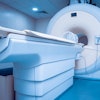VANCOUVER - A new manual rapid interleaved technique shows promise for decreasing treatment time for MR-guided focused ultrasound (MRgFUS) of uterine fibroids by as much as 70%, and for providing benefits of the technology to more women.
A research team from the Lahey Clinic in Burlington, MA, presented clinical results of 39 patients who underwent the procedure at the American Roentgen Ray Society (ARRS) meeting on Monday morning.
A standard MRgFUS procedure utilizes a 1.5-tesla MRI (GE Healthcare, Chalfont St. Giles, U.K.) for anatomical localization and treatment planning. An ultrasound transducer integrated into the MR table (ExAblate 2000, InSightec, Tirat Carmel, Israel) is used to deliver a sonication, a single-exposure of focused ultrasound energy at approximately 1,000 times diagnostic ultrasound levels.
The sonication process thermally ablates targeted tissue. During sonication, the MR system displays the relative tissue temperature as a color map superimposed on the anatomical MR image. This allows the treating physician to monitor temperature changes inside the patient in real-time.
"We're able to identify temperature every three seconds at 1.5 tesla," said Dr. George Holland of the Leahy Clinic, who presented the results of his team's research.
Monitoring tissue temperature is a critical component of the technology, as thermal therapy occurs over a broad range of temperatures, is dependent on time, and is an exponential function, according to Holland.
"For ablation to occur at 43° C, you'd have to hold the tissue at that temperature for 240 minutes, which is a little long," he said. "This rapidly changes as you go to 54° C, where this takes place in three seconds."
The advantage of MRgFUS treatment for uterine fibroids is that patient recovery takes from zero to two days, there are no post-treatment narcotics needed, and the procedure requires no patient hospitalization.
For patients to participate in the study, Leahy researchers required a gynecological examination and prior MRI that confirmed a definitive diagnosis of symptomatic uterine fibroids. The group obtained T2-weighted images from three cardinal imaging planes at 4,000 to 7,000 msec TR and 95 to 102 msec TE.
The rapid manual interleaved MRgFUS (iMRgFUS) procedure developed by Holland and his colleagues plots fibroids into treatment areas of between two and five separate nonoverlapping regions on the fast spin-echo (FSE) images. This permitted the intersonication, the cooling time between sonication treatments, to be reduced from a default of 90 seconds to 45 to 50 seconds. The 45-second intersonication minimum is mandated as a minimal value by the U.S. Food and Drug Administration, Holland noted.
Sonications were performed in 14- to 20-second periods, then monitored with an MR thermal map, which is performed with a spoiled gradient-echo sequence, he said.
The researchers found that iMRgFUS permitted up to 127 sonications of fibroids in a three-hour treatment period compared with the 60 to 70 sonications of the conventional technique in the same time span, effectively doubling the volume of treatment. This allowed the same-size fibroid to be treated in approximately 60% of the time with iMRgFUS as compared to conventional MRgFUS, Holland noted.
"Basically, it allows the procedure to be performed faster, about 50% to 70% faster," he said.
In addition, the iMRgFUS opens the technology to women who may not have been considered candidates for the therapy.
"Using this technique, women with fibroids can be treated faster and women that would previously not be considered for the treatment because of the size of their fibroid or because the number of fibroids can now also be treated in a single session," Holland added.
By Jonathan S. Batchelor
AuntMinnie.com staff writer
May 2, 2006
Related Reading
Focused ultrasound effective against uterine fibroids, February 9, 2006
MRgFUS provides effective, noninvasive treatment for uterine fibroids, November30, 2005
MRI-guided ultrasound therapy relieves fibroid symptoms, December 14, 2004
U.S. advisers back new ultrasound fibroid therapy, June 4, 2004
Copyright © 2006 AuntMinnie.com


.fFmgij6Hin.png?auto=compress%2Cformat&fit=crop&h=100&q=70&w=100)





.fFmgij6Hin.png?auto=compress%2Cformat&fit=crop&h=167&q=70&w=250)











